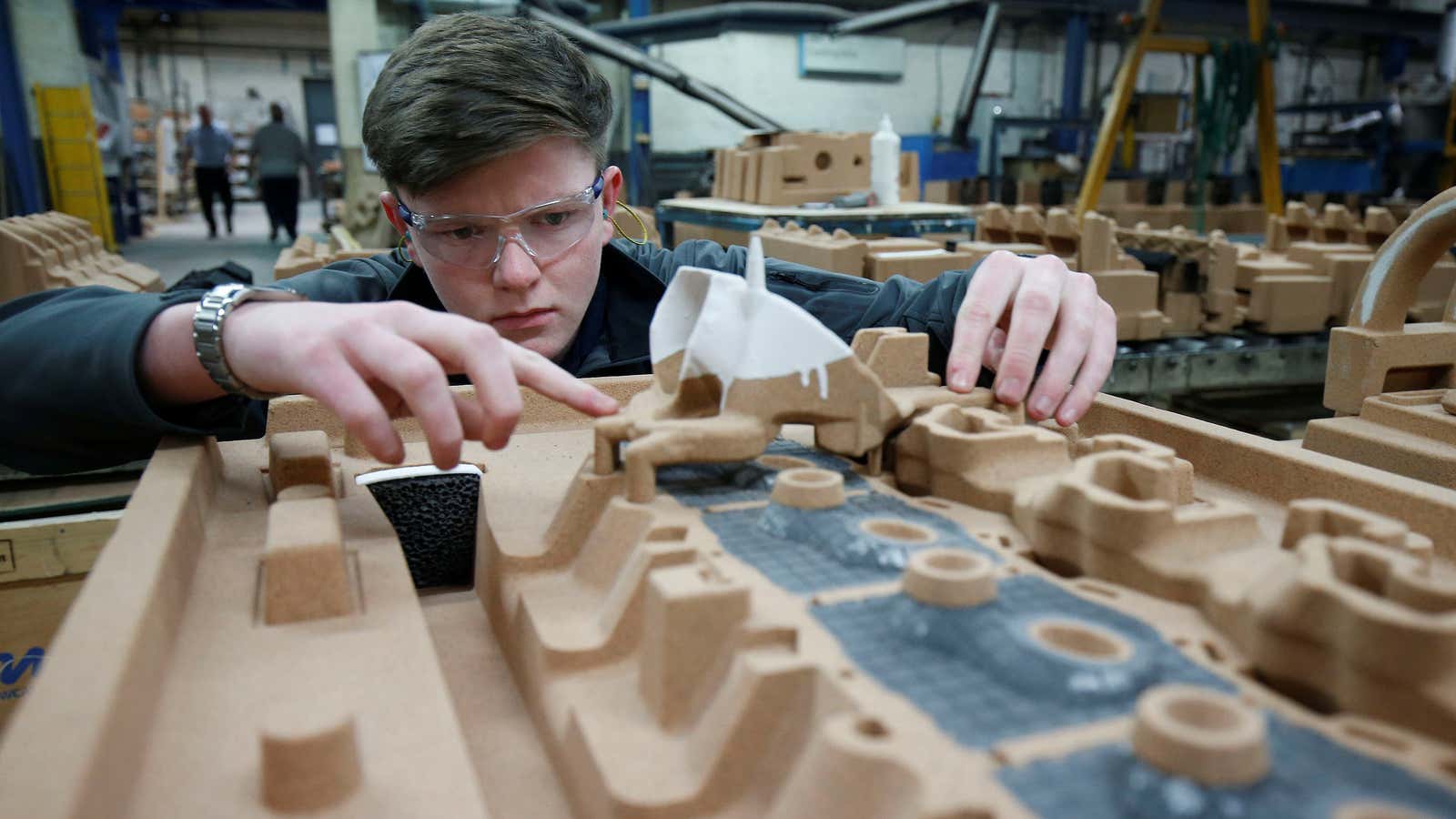At the recent White House roundtable discussion on vocational education attended by president Trump and German chancellor Angela Merkel, Marc Benioff, chairman and CEO of Salesforce, called on the President to “take a moonshot goal to create 5 million apprenticeships in the next five years.”
Given the president campaigned on a promise to deliver 25 million new jobs over the next 10 years, Beinoff’s go big or go home attitude was perfectly pitched for his audience. In response Trump readily agreed, stating “let’s do that, let’s go for that 5 million.”
That statement pricked up the ears of vocational training advocates across the country who have been hoping his administration will seize the untapped growth potential for apprenticeship programs in this country, and issue an official announcement soon. The time is right to pursue a Benioff’s goal, which could potentially offer a myriad of new opportunities to millions of Americans to have better, fulfilling careers, whilst making a significant down payment on the President’s 25 million jobs promise.
While we have been getting used to regular good news on the labor front, with over 450,000 new hires across January and February, with unemployment near nine year lows at 4.7% and the economy inching towards full employment, these figures mask two chronic, nagging problems.
The first is persistently high youth joblessness—a consequence of too many young people completing high school (and college) without gathering meaningful work experience or marketable skills. US youth unemployment is around 10% percent nationally, and twice that in many urban areas. The second problem is of employers who are unable to find people with the skill set required to get the job done—the “skills gap” is harder to measure, but it is conservatively estimated that upwards of 5.9 million jobs are currently unfilled.
The power of apprenticeship programs in reducing youth unemployment and narrowing the skills gap by creating custom skilled workers has long been demonstrated in northern Europe, where this centuries-old form of learning remains strong and enjoys both business and societal support. (Germany’s leadership in this domain was the key reason for Merkel’s attendance.)
There, the majority of high school students graduate with substantial vocational training and work experience under their belts. Of those who do not go directly to university, a large percentage enter apprenticeship programs, which are widely available across many industries. The transition between the world of school and the world of work is much more integrated than what we typically witness here in the US. Apprenticeship programs provide these young people with the skills they require to get and keep well-paying jobs, and businesses get to access the skilled workers they require.
An apprentice is an employee who earns as they learn, both on the job and, in a community college or tech school classroom. Learning under the guidance of an experienced tradesperson, the apprentice masters a valuable and often highly paid occupation. Several years of hands-on learning equips the worker with exactly the skills and experience they will need for a productive work life and career. As an approach to making people employable and boosting the skilled labor supply, the apprenticeship model delivers the greatest bang for the buck.
The term apprentice however still conjures up images from earlier times, of a young person in a leather apron making barrels, hand-looming cloth, silver smithing, or shaping a red-hot piece of iron on an anvil. However, if that’s what pops into your mind, think again.
Twenty-first century apprenticeships are more sophisticated and progressive, and are found in modern fields beyond the blue collar such as IT and cyber security, advanced manufacturing, energy, construction, healthcare, transport and logistics and hospitality. Indeed, many of today’s most attractive knowledge economy jobs can be learned through apprenticeships.
One of the great strengths of an apprenticeship is the unique relationship it creates between mentor and learner. This multigenerational ‘pay it forward’ relationship is more personal and interactive than anything we find in the academic world of professors. Apprentices do not sit passively in lecture halls. Instead, they engage in active exchanges that involve diagnosing problems, forming and testing opinions, receiving direct feedback and collaborating on solutions. These experiences develop the apprentice’s workplace sophistication, maturity, sense of accountability, and problem-solving power—virtues that benefit both apprentice and employer.
So how could the Trump administration begin to tackle Benioff’s ‘moonshot’ target of 5 million apprentices? One way would be to better reallocate existing dollars from ineffective academic only programs to apprenticeship and other cost-effective strategies which directly deal with identified skill mismatches and shortages at a local level. With this reallocated funding, the government should seek to provide market-targeted incentives to private training organizations, community colleges, state and local agencies to market and provide financial support for the rapid nationwide expansion of apprenticeships.
Apprenticeships offer a solid bridge between school and the world of work, attack the root causes of youth unemployment, and create a pathway to successful and rewarding careers.
